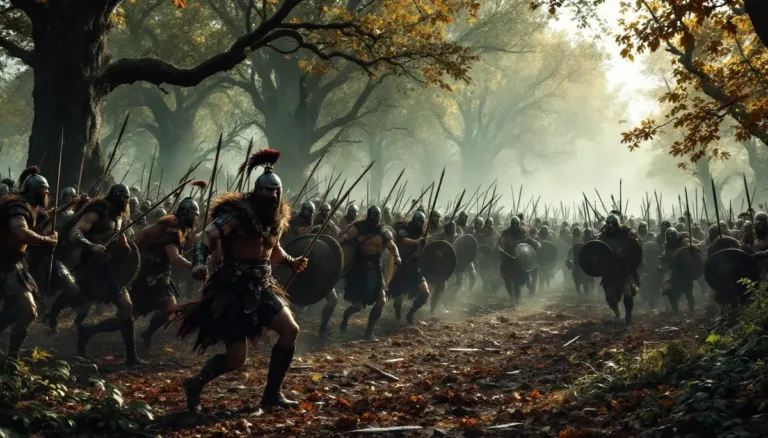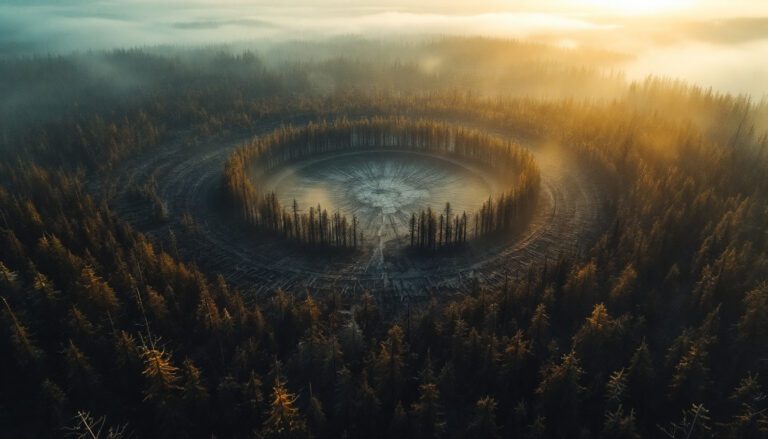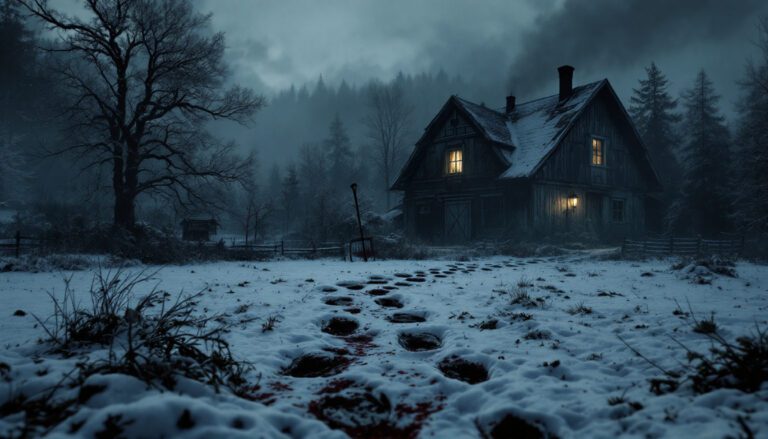Dyatlov Pass Incident: What Really Happened?
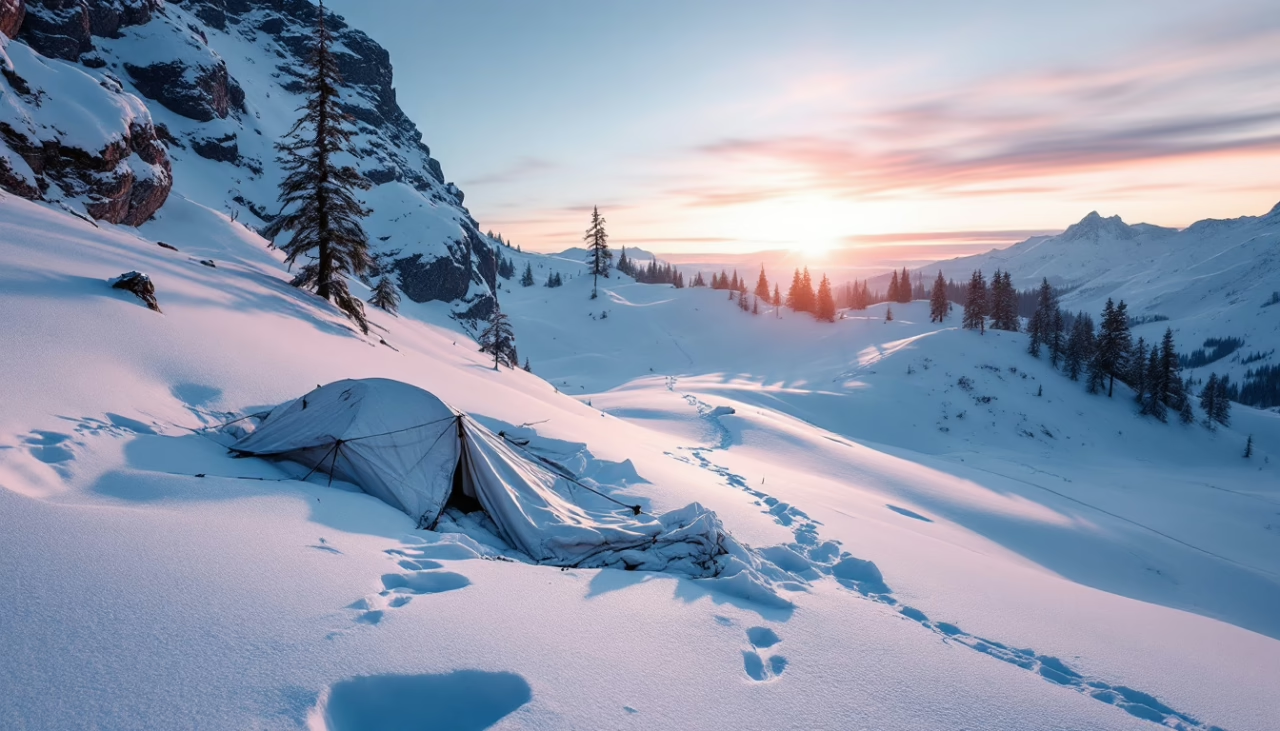
Inside the Mystery of Dyatlov Pass – In the frozen wilderness of the Ural Mountains, nine experienced hikers vanished into the night of February 1959.
Their bodies, discovered weeks later, presented investigators with a tableau of inexplicable horror. A tent slashed from within. Footprints of barefoot escapees in snow. Bodies with crushed ribs yet no external trauma.
The Soviet investigation’s terse conclusion—”compelling natural force”—offered little satisfaction.
From avalanche theories to military experiments, KGB involvement to infrasound-induced panic, the Dyatlov Pass Incident defies conventional explanation, its mystery preserved in the silent, snow-covered peaks that witnessed their final moments.
Key Takeaways
Hide- Nine experienced hikers died mysteriously in February 1959 in the Ural Mountains after fleeing their tent in subzero temperatures.
- The hikers' tent was found slashed from inside, with footprints showing they fled barefoot or in socks into -30°C weather.
- Bodies displayed puzzling injuries including crushed ribs without external trauma, missing eyes, and paradoxical undressing.
- Modern scientific analysis suggests a small delayed avalanche likely forced the hikers to cut their way out in panic.
- Alternative theories range from military weapons testing and infrasound-induced panic to katabatic winds causing disorientation and hypothermia.
The Expedition of Dyatlov Pass Begins
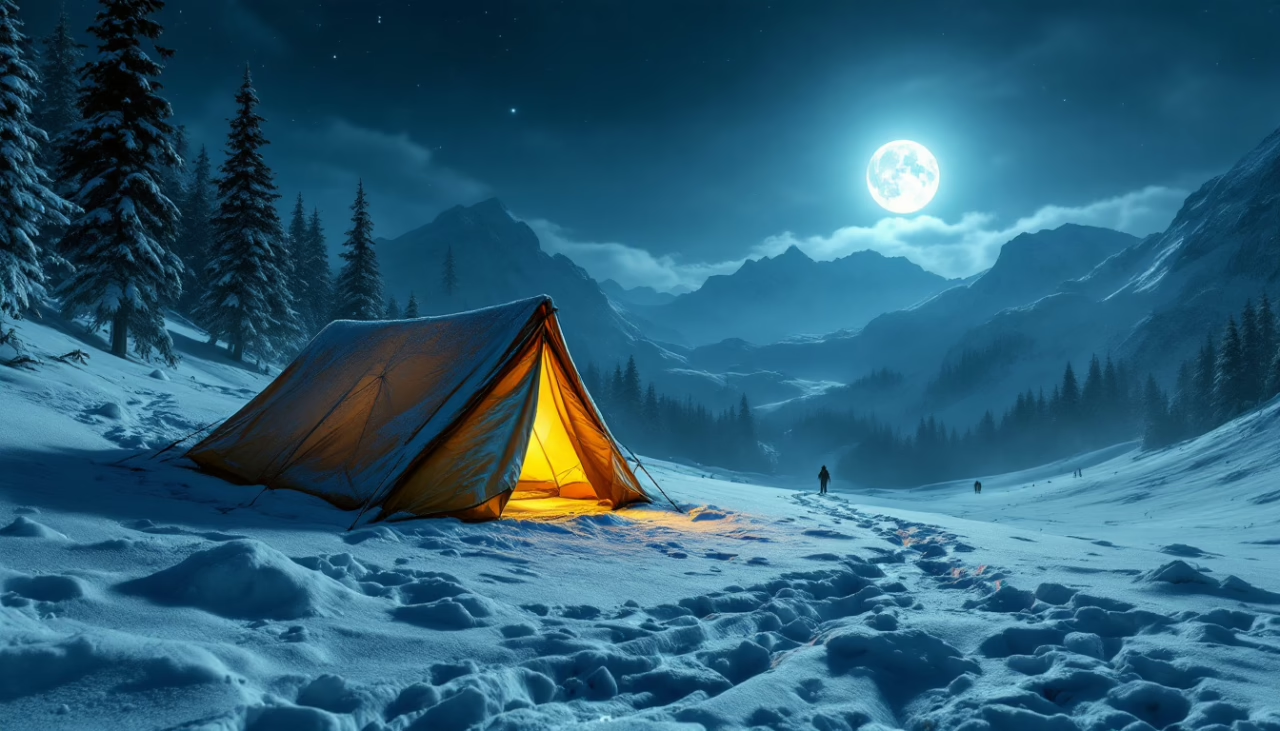
The Dyatlov expedition consisted of nine experienced Soviet hikers, mostly students and graduates of the Ural Polytechnic Institute, led by 23-year-old Igor Dyatlov, whose confidence and mountaineering abilities had earned him the group’s trust and admiration.
In late January 1959, the team departed from Sverdlovsk (now Yekaterinburg) toward the northern Urals, documenting their journey through photographs and diary entries that would later become essential evidence in understanding their fate.
Their destination was Otorten Mountain, a challenging Class III hike through the snow-covered wilderness that required crossing the treacherous terrain of what would posthumously be named Dyatlov Pass—a remote, wind-swept corridor between peaks where temperatures regularly plunged below -30 degrees Celsius.
Who Were the Hikers?
The nine ill-fated hikers of the Dyatlov expedition, all experienced outdoorspeople and students or graduates of the Ural Polytechnic Institute, set out in January 1959 with lively optimism and meticulous planning for what should have been a challenging but manageable ski trek through the northern Urals.
Led by 23-year-old Igor Dyatlov, a respected mountaineer known for his careful approach to wilderness navigation, the group included Zinaida Kolmogorova, Lyudmila Dubinina, Alexander Kolevatov, Rustem Slobodin, Yuri Doroshenko, Nikolai Thibeaux-Brignolles, Yuri Krivonischenko, and Yuri Yudin—though Yudin would turn back early due to health issues, unknowingly saving his own life.
Their ambitious route, classified as a “Category III” difficulty hike, would take them from Vizhai to Otorten Mountain through some of the most remote and unforgiving terrain in the Soviet Union.
This journey was carefully documented in their diaries and photographs that would later become essential evidence in understanding their mysterious fate.
Profiles of the group members
Nine intrepid souls set out on the fateful journey that would become known as the Dyatlov Pass incident, each bringing unique skills and personalities to the ill-starred expedition.
Their diverse personal backgrounds—from military service to academic achievement—created complex group dynamics. Leadership qualities emerged naturally, with relationships explored through their shared passions.
Individual motivations varied, yet all were united by an indomitable yearning for adventure and discovery.
Their experience, goals, and planned route
Veterans of numerous trekking expeditions, the hikers of the Dyatlov group possessed considerable wilderness experience, with most holding Grade II certification in hiking—a respectable achievement in the Soviet outdoor classification system.
Their hiking objectives centered on conquering the imposing Otorten Mountain, a journey requiring meticulous route planning through the northern Urals’ remote terrain, demanding robust team dynamics and well-rehearsed survival strategies against the winter’s brutal elements.
Setting Out into the Ural Mountains
The nine hikers set out on their ill-fated expedition on January 23, 1959, boarding a train from Sverdlovsk to Ivdel before continuing by truck to Vizhay, the last settlement before the vast wilderness.
Their meticulous journey log and diary entries chronicled their progress through increasingly difficult terrain, painting a vivid picture of youthful enthusiasm against the stark, snow-covered Ural landscape.
The final communication from the group came on January 31, when Dyatlov sent a telegram indicating they were preparing to cross the pass, stating they would send their next message upon reaching Vizhay—a message that would never arrive.
Timeline of the journey
In January 1959, an ill-fated expedition of young, experienced hikers departed from Sverdlovsk (now Ekaterinburg) with ambitious plans to traverse the northern Ural Mountains and reach Otorten Mountain, a journey classified as Category III—the most challenging difficulty rating in Soviet hiking nomenclature.
Their meticulously planned route, hampered by harsh environmental conditions, would test both their hiking equipment and resolve as they navigated a treacherous winter landscape.
Last known communication
After sending their final telegram on January 28, 1959, the nine hikers left a poignant trail of written and photographic evidence that would later become essential to understanding their tragic fate.
Their last messages, preserved in diaries and communication logs, revealed no apprehension about their journey.
Investigators would later scrutinize these final thoughts, searching in vain for distress signals or lost transmissions that might explain their demise.
Discovery in the Snow
The search for the missing hikers, which began on February 20, 1959, culminated in a grim tableau of discoveries scattered across the snowy slopes of Kholat Syakhl.
Rescuers first located an abandoned tent partially buried in snow, its canvas mysteriously slashed from the inside, with nine pairs of boots and all the group’s belongings still neatly arranged within.
The bodies of the nine expeditioners were recovered over the span of several months, found at varying distances from their camp—some in a ravine, others near the remains of a small fire—bearing inexplicable injuries that would perplex investigators for decades to come.
The Search and Recovery Operation
When the nine hikers failed to send a scheduled telegram on February 12, 1959, concerns mounted among friends and relatives, prompting the eventual formation of search parties on February 20.
The rescue teams, battling harsh Ural winter conditions with temperatures plummeting to -30°C, discovered an eerie sight at Kholat Syakhl: a tent partially buried in snow, slashed open from the inside, with all personal belongings abandoned as if in desperate flight.
Footprints in the snow, visible despite days of intermittent snowfall, led away from the campsite toward the nearby forest edge, suggesting the group had fled barefoot or in socks—a puzzling decision that would become central to the enduring mystery of the Dyatlov Pass incident.
Delay in response and rising concern
Several days passed before any real concern about the missing hikers began to manifest among university officials and family members.
The investigation timeline reveals significant search delays stemming from communication failures between expedition organizers and authorities.
When the hikers missed their February 12 return deadline, response protocols faltered; initial rescue efforts mobilized belatedly, squandering critical hours in the unforgiving Ural winter.
Rescue teams uncovering the abandoned campsite
After weeks of administrative inertia, rescue operations finally commenced in late February 1959, with search parties dispatched into the harsh mountainous terrain where nine experienced hikers had vanished without explanation.
Searchers battled blinding snowstorms and treacherous conditions, eventually discovering the group’s abandoned tent—partially collapsed, slashed open from within, and surrounded by footprints leading into the darkness—with all personal belongings and equipment eerily intact inside.
What Was Found and Where
The discovery of the hikers’ abandoned campsite revealed a macabre tableau: a tent slashed from the inside, with footprints suggesting a desperate exodus into the frigid night and personal belongings—food, cameras, and clothing—strewn about in disarray.
Over the following weeks, searchers located the nine victims in stages, finding the first group relatively close to the remnants of a makeshift fire, while the remaining four were discovered months later in a ravine, bearing peculiar and disturbing injuries that defied conventional explanation.
Their distribution across the landscape traced a grim narrative of attempted survival, with bodies positioned in ways suggesting some had attempted to return to camp before succumbing to the elements, while others appeared to have died in circumstances that continue to mystify investigators decades later.
Tent torn from inside and scattered belongings
Ripped jaggedly from the inside out, the expedition’s canvas tent presented investigators with their first shocking insight into the violent nature of the Dyatlov group’s final moments.
Tent damage analysis revealed methodical, frantic cuts rather than random tears, while belongings distribution patterns suggested an orderly yet hurried evacuation.
The inside tearing implications, coupled with unexplained timeline discrepancies, continue to fuel survivor behavior theories decades later.
Sequence of body discoveries and their conditions
Beneath the frozen February skies of 1959, search teams uncovered a grim chronology of death that would haunt investigators for decades to come.
The discovery timeline revealed bodies found in stages: first, three near a cedar tree; later, two in the forest; finally, four deep in a ravine.
Analysis showed varying body conditions: paradoxical undressing, massive internal injuries, and peculiar orange skin tints that challenged forensic analysis.
Unusual Details and Unanswered Questions
The Dyatlov Pass incident continues to perplex investigators due to its bizarre physical evidence, most importantly the catastrophic internal injuries suffered by some victims despite no external trauma, and the inexplicable high levels of radiation detected on several victims’ clothing.
Compounding the mystery, forensic experts noted peculiar behaviors before death, including the fact that the hikers cut their way out of their tents from the inside and fled barefoot into subzero temperatures, suggesting a profound and immediate threat.
Perhaps most unsettling were the testimonies from the search party who described unnaturally orange skin on the bodies, missing tongues, and “strange dark tans,” physical anomalies that science has struggled to explain through conventional means for over sixty years.
Bizarre Injuries and Inexplicable Damage
Perhaps the most disturbing aspects of the Dyatlov Pass tragedy are the inexplicable injuries sustained by some of the victims: crushed skulls and broken ribs with no corresponding external injuries, challenging conventional understandings of blunt force trauma.
Investigators were further confounded by the presence of radioactive contamination detected on some of the hikers’ clothing, a finding that defies straightforward explanation in this remote wilderness setting.
These peculiar forensic details have fueled decades of speculation and remain central to the enduring mystery, suggesting forces—whether natural or otherwise—beyond what the initial Soviet investigation was willing or able to acknowledge.
Crushed skulls and broken ribs with no visible external trauma
Among the most disturbing aspects of the Dyatlov Pass Incident, several victims exhibited catastrophic internal injuries that defied conventional explanation, presenting investigators with a macabre paradox of crushed skulls and shattered ribcages beneath seemingly unmarked skin.
Forensic analysis revealed mysterious injuries that continue to baffle experts:
- Trauma patterns inconsistent with typical falls or impacts
- Crushing force comparable to high-speed vehicular accidents
- Absence of external bruising despite severe internal damage
- Psychological effects on investigators who witnessed these anomalies
Radioactive traces found on some clothing
Radioactive contamination discovered on several hikers’ clothing items represents one of the most scientifically perplexing elements of the entire Dyatlov mystery, defying straightforward explanation and fueling decades of speculation about possible nuclear involvement.
Forensic investigation revealed elevated beta radiation levels, particularly on clothing worn by Rustem Slobodin and Georgy Krivonischenko, raising profound questions about environmental impact and health implications that remain unanswered despite extensive clothing analysis.
Strange Behavior Before Death
Perhaps the most perplexing aspect of the Dyatlov Pass incident manifests in the hikers’ apparent behavior immediately preceding their deaths, as evidenced by their minimal clothing despite temperatures of -30°C and physical indicators suggesting a collective, panicked flight from their tent.
Investigators noted that some victims had attempted to climb nearby trees, while others appeared to have fled barefoot across the snow, actions suggesting an immediate and overwhelming fear rather than rational decision-making.
These behavioral anomalies, coupled with the absence of natural predators in the area and no clear environmental threat, continue to fuel speculation about what could have triggered such desperate survival attempts among experienced outdoorspeople known for their preparedness and composure in wilderness settings.
Minimal clothing and signs of sudden panic
One of the most perplexing aspects of the Dyatlov Pass incident emerges in the investigators’ discovery of the hikers wearing minimal clothing despite the brutal Siberian winter conditions, suggesting a scenario of extreme and sudden panic.
- Most victims wore only underwear or light garments, incompatible with survival instincts
- Footwear included a single shoe or barefoot tracks in snow
- Psychological stress manifested in desperate attempts to flee environmental factors
- Clothing removed despite temperatures of -30°C, contradicting normal survival behavior
Evidence of attempts to climb trees or flee
Scratching desperately at bark with bloody fingernails, several members of the Dyatlov group exhibited behavior suggesting frantic attempts to escape an unseen threat, with forensic evidence revealing their final, perplexing actions before death.
Tree climbing attempts were documented at multiple sites, with escape evidence indicating survival instincts had triggered primitive fleeing behaviors.
These panic responses remain unexplained—did they perceive a danger invisible to investigators?
Official Investigations and Early Conclusions
Soviet authorities initially responded to the Dyatlov incident with a significant search operation, though they quickly shrouded their findings in bureaucratic secrecy, classifying many documents for decades.
The official conclusion—that an “unknown compelling force” caused the deaths—reflected both the investigators’ genuine bewilderment and their reluctance to pursue explanations that might suggest military culpability or supernatural elements.
Media coverage remained conspicuously muted throughout the 1960s, creating an information vacuum that amplified public speculation and cemented the incident’s status as one of Russia’s most enduring mysteries.
Soviet Authorities’ Initial Response
Soviet investigators concluded their inquiry into the Dyatlov Pass deaths with the notoriously vague official cause of “a compelling natural force,” leaving decades of questions unanswered and conspiracy theories to flourish.
The case files remained classified for nearly thirty years, their contents becoming the subject of widespread speculation and amateur investigation throughout Russia and beyond.
When authorities finally closed the case in 1959, few imagined that the mysterious deaths of nine hikers in the Ural Mountains would transform from a regional tragedy into one of the Cold War era’s most enduring mysteries.
The vague cause listed in reports
The official investigation’s conclusion remains one of the most perplexing aspects of the Dyatlov Pass case, offering little substantive explanation for the hikers’ deaths beyond a vague attribution to “a compelling natural force.”
This nebulous phrasing, adopted in the final reports issued by Soviet authorities in May 1959, deliberately sidestepped specific causation while acknowledging the extraordinary circumstances surrounding the incident.
The investigative discrepancies fueled public perception of:
- Official concealment of critical findings
- Deliberate obscuring of potentially classified information
- Unexplained redactions throughout case documents
- Inconsistencies between preliminary and final reports
Public access to the files and closure
Although classified for decades under Soviet security protocols, the Dyatlov Pass investigation files remained largely inaccessible to the public until the political thaw following the dissolution of the USSR in 1991.
Researchers subsequently encountered significant transparency issues when requesting archival materials, as the government secrecy that shrouded the case persisted despite promises of information release, leaving many questions permanently unanswered.
Speculation and Media Silence
Soviet authorities imposed unprecedented information restrictions on the Dyatlov Pass tragedy, classifying documents related to the investigation for nearly three decades and effectively suppressing public discussion of the mysterious deaths.
The absence of transparent information created a vacuum where speculation flourished privately, even as official media maintained rigid silence about the peculiar circumstances surrounding the hikers’ demise.
Interest in the case experienced dramatic revival after the fall of the Soviet Union, when declassified files emerged alongside newfound freedom to examine the incident through journalistic investigations, scientific inquiry, and personal accounts from locals who had been previously forbidden from sharing their knowledge.
Why the case remained restricted for years
Despite numerous attempts by journalists and researchers to gain access to official records, information regarding the Dyatlov Pass incident remained classified and heavily restricted by authorities for decades following the 1959 tragedy.
The prolonged case secrecy fueled public skepticism about official explanations.
Key factors behind government restrictions included:
- Potential military testing in the area
- Cold War information control protocols
- Document classification under national security provisions
- Desire to suppress embarrassing investigative failures
Revival of interest post-Soviet era
The collapse of the Soviet Union in 1991 released archives and allowed for a remarkable resurgence of public interest in the Dyatlov Pass incident, transforming what had been whispered conversations into open discourse.
Investigative journalism flourished, feeding cultural fascination with the mystery. Media resurgence followed, with documentaries and books examining this enigmatic tragedy, while post-Soviet curiosity drove ordinary citizens to conduct their own inquiries.
Mainstream Theories
Scientific explanations of the Dyatlov Pass tragedy have coalesced around several mainstream theories that attempt to reconcile the physical evidence with natural phenomena.
The avalanche hypothesis, perhaps most prominent among researchers, suggests that a small snow slide forced the hikers from their tent, while the katabatic wind theory proposes that powerful, sudden downdrafts created life-threatening conditions that compelled their nighttime evacuation.
Infrasound-induced panic, a third significant explanation, posits that low-frequency sound waves, generated by wind interacting with the mountain topography, could have triggered profound anxiety and irrational behavior among the group, leading to their fatal decisions in the freezing darkness.
Avalanche Explanation
The avalanche theory, while widely accepted by official investigations as explaining the Dyatlov group’s demise, faces significant challenges regarding timeline discrepancies and the topographical characteristics of the slope where the hikers established their camp.
Critics point to the gentle 23-degree incline—generally considered insufficient to trigger a spontaneous snow slide—and question how an avalanche could occur hours after the tent was established without any reported snowfall or dramatic temperature changes.
These objections, raised by independent researchers and surviving expedition members alike, have fueled alternative explanations for the mysterious deaths that occurred on that frigid February night in 1959.
Timeline inconsistencies and terrain arguments
Despite growing acceptance of the avalanche theory among scientists, critical inconsistencies in timeline reconstruction and geographical considerations continue to challenge this explanation for the Dyatlov Pass incident.
- Timeline discrepancies between hikers’ diaries and search discoveries raise questions.
- Terrain analysis reveals relatively gentle slopes (under 30°) where avalanches rarely occur.
- Hiking conditions documented by the group don’t align with avalanche prerequisites.
- Weather factors and search delays complicate accurate reconstruction of events.
Counterpoints raised by researchers
Recent challenges to the avalanche theory have prompted researchers to offer substantial counterpoints, highlighting how conventional explanations might indeed account for the puzzling aspects of the Dyatlov incident that critics find most troubling.
Through methodical evidence analysis and theory comparisons, researchers present alternative explanations for unresolved mysteries, arguing that environmental factors, rather than supernatural or conspiratorial elements, created the tragic circumstances that defied immediate understanding.
Katabatic Wind Hypothesis
Katabatic winds, powerful downslope air movements common in mountainous regions, represent another plausible explanation for the bewildering chain of events at Dyatlov Pass.
The sudden pressure drops associated with these intense winds could have induced profound disorientation among the hikers, creating symptoms similar to hypoxia—confusion, impaired judgment, and even hallucinations that triggered their fatal flight from perceived danger.
This atmospheric phenomenon might explain both the collapsed tent found by searchers and the group’s seemingly irrational decision to flee into lethal temperatures without proper clothing, suggesting that natural forces, rather than paranormal or criminal elements, set in motion the tragic sequence that has puzzled investigators for decades.
How sudden air pressure drops could cause disorientation
When a sudden drop in barometric pressure occurs in mountainous regions, the effects on human physiology and cognition can be both profound and disorienting.
Air pressure effects manifest in several concerning ways:
- Sudden disorientation symptoms including vertigo and impaired judgment
- Altitude sickness exacerbating confusion and decision-making abilities
- Psychological impact creating panic or irrational behavior
- Environmental influences amplifying these effects in cold, windswept conditions
Influence on tent collapse and group panic
Among the most compelling explanations for the chaotic scene discovered at Dyatlov Pass, the katabatic wind hypothesis stands out for its ability to connect meteorological phenomena with the group’s observable panic response.
The sudden collapse of tent dynamics under powerful winds would trigger primal survival instincts, explaining the group psychology evident in their hasty departure.
Environmental factors—specifically the disorienting combination of darkness, cold, and structural failure—created ideal conditions for a catastrophic panic response.
Infrasound-Induced Panic
Infrasound—sound waves below the threshold of human hearing—has been proposed as an environmental trigger that may have induced a state of panic among the Dyatlov hikers, potentially explaining their hasty evacuation of the tent without proper attire.
These low-frequency vibrations, which can be generated by wind interacting with topographical features like the Kholat Syakhl’s slopes, are known to cause unsettling psychological effects including anxiety, dread, and even hallucinations in some individuals.
The resulting fight-or-flight response could have compelled the group to flee from an invisible yet physiologically disruptive force, cutting their way out of the tent in a desperate attempt to escape the inexplicable sensations overwhelming their nervous systems.
Low-frequency sound effects on the brain
Although investigators initially discounted environmental factors in the hikers’ deaths, the infrasound theory has emerged as one of the more scientifically plausible explanations for the bizarre behavior exhibited at Dyatlov Pass.
Documented infrasound effects include:
- Brain responses that trigger fight-or-flight reactions at specific sound frequencies
- Psychological impact causing disorientation and terror
- Auditory hallucinations mistaken for real threats
- Cognitive impairment preventing rational decision-making
Speculated connection to the tent’s sudden evacuation
The speculated link between infrasonic phenomena and the hikers’ sudden evacuation of their tent represents one of the most compelling scientific explanations for the Dyatlov Pass tragedy.
Environmental triggers, particularly low-frequency sound waves, could have induced sudden panic reactions, overwhelming the group’s rational thought processes.
Analysis of group dynamics suggests collective survival instinct responses may have amplified individual fears, leading to the catastrophic tent evacuation theories that attempt to explain their seemingly irrational flight into lethal conditions.
Alternative and Fringe Theories
Beyond mainstream explanations, the Dyatlov Pass incident has spawned numerous fringe theories that attempt to explain the inexplicable deaths through unconventional frameworks.
Some researchers speculate that military testing of weapons or aircraft went catastrophically wrong, while others embrace paranormal explanations involving UFO encounters or energy anomalies that allegedly left radiation traces and unusual bodily injuries.
The remote wilderness location has also fueled persistent folklore about the involvement of the Yeti or other aggressive wildlife, theories that, while lacking substantial evidence, continue to captivate those who find conventional explanations insufficient for the bizarre circumstances surrounding the nine hikers’ deaths.
Military Testing Gone Wrong
One persistent theory surrounding the Dyatlov Pass incident suggests that the hikers inadvertently wandered into a military testing zone where experimental parachute mines or other secret Soviet weapons were being deployed, causing the unusual injuries documented in the autopsy reports.
Such speculation gained traction due to notable gaps in official documentation, including missing diary pages from the hikers and reports of classified military activities in the vicinity during that period.
The Soviet government’s immediate classification of case materials for decades afterward, combined with witness accounts of strange glowing orbs in the sky that night, has fueled suspicions that authorities concealed a catastrophic weapons test gone awry, preserving national security at the expense of historical truth.
Parachute mines and secret weapons theories
Military experimentation, shadowy and unacknowledged, forms the backbone of several compelling theories about the Dyatlov Pass incident.
Classified documents suggest secretive operations involving experimental weapons may explain the unexplained phenomena encountered by the hikers:
- Parachute mines tested in remote locations
- Low-frequency sonic weapons causing internal injuries
- Radiological devices explaining radiation traces
- Failed rocket tests necessitating government coverup
Alleged documentation gaps and classified activities
When researchers examine the official investigation files of the Dyatlov Pass incident, they invariably encounter suspicious gaps in documentation that suggest deliberate redaction or removal of evidence.
These documentation discrepancies extend beyond simple administrative oversight; persistent government secrecy has created investigative barriers that prevent complete archival access.
Numerous classified files remain inaccessible to independent investigators, fueling speculation about military involvement in the hikers’ mysterious deaths.
UFO and Paranormal Claims
Several eyewitness accounts reported strange, luminous phenomena in the skies above the Ural Mountains on the night of the hikers’ deaths, fueling speculation about extraterrestrial involvement in the tragedy.
This aerial enigma, combined with the unusual physical conditions of the bodies—some displaying inexplicable orange skin tones and premature aging—provided fertile ground for UFO theorists during the Cold War era when public fascination with alien visitation was reaching its zenith.
The Dyatlov case, with its perfect storm of unexplained elements, has become a touchstone in paranormal circles, representing how cultural anxieties and scientific mysteries often intersect to create enduring enigmas that resist conventional explanation.
Lights in the sky reported nearby
Mysteriously glowing phenomena illuminated the night skies near the Dyatlov Pass during the period surrounding the infamous incident, according to multiple witnesses from surrounding areas.
The unexplained phenomena have become entrenched in local folklore, with diverse eyewitness accounts describing:
- Glowing orange spheres drifting silently above the mountains
- Pulsating lights that hovered before rapidly ascending
- Strange atmospheric anomalies resembling fireballs
- Luminous objects documented by geological expeditions in the historical context
Cultural obsession with extraterrestrial angles
Why has the possibility of extraterrestrial involvement in the Dyatlov Pass incident captured the public imagination with such tenacity?
The remote location, unexplained lights, and unusual injuries feed extraterrestrial fascination and UFO sighting reports.
These cultural narratives persist because alien encounter theories offer a gripping alternative to mundane explanations.
Conspiracy beliefs flourish in this atmosphere of uncertainty, where scientific explanations seem insufficient against the profound mystery of nine inexplicably dead hikers.
Yeti or Animal Attack Rumors
Among the alternative explanations for the Dyatlov Pass tragedy, claims of a Yeti attack stand especially tall in folklore despite their factual shortcomings.
Forensic evidence from the victims’ bodies particularly lacked the characteristic tears, bite marks, or defensive wounds typically associated with large predator attacks, suggesting that whatever caused their deaths was not an animal, mythical or otherwise.
Popular culture has greatly exaggerated these theories through sensationalized documentaries, online forums, and fictional adaptations that capitalize on the mysterious circumstances, transforming a real tragedy into something resembling a supernatural horror story.
Lack of typical animal wounds
The corpses discovered at Dyatlov Pass exhibited a conspicuous absence of typical animal attack markers, a fact that has profoundly challenged proponents of wildlife encounter theories.
Ecological anomalies and unexplained animal behavior contradict established predator patterns in several ways:
- No significant bite marks or claw lacerations
- Absence of feeding or consumption attempts
- Selective trauma inconsistent with wildlife interactions
- Environmental factors insufficient to explain the group’s dispersal pattern
Pop culture exaggeration
Mainstream media depictions of the Dyatlov Pass incident have systematically amplified its mysterious elements, transforming plausible wildlife encounters into fantastical narratives about abominable snowmen and supernatural predators.
Pop culture’s insatiable appetite for mystery has generated numerous fictional adaptations, fueling conspiracy theories and cultural fascination that overshadow scientific explanations.
This media representation exemplifies how tragedy becomes entertainment when filtered through sensationalist lenses.
Reinvestigations and Modern Science
The 2010s marked a significant resurrection of scientific interest in the Dyatlov Pass case, with researchers applying modern forensic techniques to evidence long relegated to Soviet archives.
Advanced snow science, avalanche dynamics, and cold-weather trauma analysis have offered compelling explanations for injuries once deemed inexplicable by 1959 standards.
These renewed investigations, combining computational modeling with experimental recreations of environmental conditions on Kholat Syakhl, have systematically challenged supernatural interpretations while revealing how natural phenomena, under specific circumstances, could indeed produce the peculiar pattern of events that claimed nine young lives that February night.
Renewed Efforts in the 2010s
The Dyatlov Pass mystery experienced a significant revival in the 2010s as independent researchers produced numerous documentaries, books, and digital investigations that introduced the cold case to a global audience.
Russia officially reopened the investigation in 2019, nearly sixty years after the incident, employing modern forensic techniques and scientific methodologies previously unavailable to Soviet investigators.
The updated official conclusion, which pointed to an avalanche as the primary cause of death, was met with mixed reactions from the international community of amateur sleuths and professional researchers who had grown invested in alternative explanations ranging from military testing to infrasound-induced panic.
Independent researchers and documentaries
Numerous independent researchers and documentary filmmakers have dedicated substantial resources to investigating the Dyatlov Pass incident since the 2010s, marking a period of renewed interest in the case after decades of relative obscurity in the West.
- Documentary analysis revealed discrepancies in official Soviet records.
- Independent theories ranging from avalanches to military testing gained traction.
- Research methodologies evolved with access to declassified documents.
- Media representation transformed the incident into a cultural touchstone.
Russia’s reopened case and updated conclusion
In response to mounting public pressure and the emergence of new investigative technologies, Russian authorities officially reopened the Dyatlov Pass case in February 2019, nearly sixty years after the mysterious deaths of nine hikers in the Ural Mountains.
The reopened investigation concluded that an avalanche caused the tragedy, though many critics questioned these case findings, arguing that the updated theories failed to address key evidence.
The public response remained skeptical, with legal implications largely unresolved.
What New Forensics Suggest
Recent forensic modeling has brought new clarity to the decades-old mystery through sophisticated ice slab theory and snow density simulations that demonstrate how unusual weather conditions could have created a delayed avalanche effect.
Researchers using modern avalanche dynamics have identified how a small snow slide, triggered by tent cutting, would create injuries consistent with those found on the victims’ bodies.
The victims, sleeping on a 30-degree slope beneath a snow cornice that had accumulated unusual density patterns, faced a rare but scientifically explicable natural disaster rather than the supernatural or military explanations that dominated discussions for decades.
Ice slab theory and snow density simulations
After decades of speculation and supernatural theories, compelling scientific evidence emerged in 2019 when Swiss researchers Johan Gaume and Alexander Puzrin published their groundbreaking ice slab theory in the journal Communications Earth & Environment.
Their computational model explained the hikers’ injuries through:
- Ice slab dynamics creating a delayed avalanche
- Snow density analysis showing unusual compaction patterns
- Avalanche simulations matching injury locations
- Weather impact and terrain influence creating perfect conditions
Updated avalanche dynamics
Building upon Gaume and Puzrin’s ice slab theory, modern forensic investigations have greatly refined our understanding of the avalanche dynamics at Dyatlov Pass.
Advanced snowpack stability modeling, coupled with thorough terrain analysis of the slope’s unique features, has revealed how unusual weather patterns created the perfect deadly conditions.
These insights illuminate not only what transpired that February night, but also explain the rescue challenges faced by those who later discovered the tragic scene.
Why the Dyatlov Pass Incident Still Resonates
The Dyatlov Pass incident continues to haunt our collective imagination decades after the events, its mysterious circumstances fostering countless theories that speak to profound human anxieties about the unknown.
Cultural representations in literature, film, and digital media have transformed these nine hikers’ fates into something approaching modern mythology, their story resonating across generations despite—or perhaps because of—its stubborn resistance to definitive explanation.
Their legacy endures not merely as an unsolved mystery but as a poignant reminder of human vulnerability in the face of nature’s power, their photographs and diaries preserving the lively spirits of young adventurers whose lives were cut tragically short on that snow-covered mountain slope in 1959.
Lingering Doubts and Cultural Impact
The enduring fascination with the Dyatlov Pass incident stems largely from widespread skepticism toward official explanations, a distrust amplified by the Soviet authorities’ history of opacity and the investigation’s perceived inadequacies.
This public suspicion has catalyzed numerous artistic interpretations—novels, films, and songs that reimagine the tragedy through lenses ranging from the supernatural to the conspiratorial, each work attempting to fill narrative gaps left by inconclusive evidence.
Documentaries like “Russian Yeti: The Killer Lives” and “Dead Mountain: The Dyatlov Pass Incident” continue to examine the mystery, simultaneously preserving the victims’ memory and transforming their tragic end into a cultural touchstone that resonates across generations, transcending its origins to become a universal symbol of the unexplained.
Public distrust in authority reports
Distrust, pervasive and corrosive, characterizes much of the public response to official explanations of the Dyatlov Pass incident over subsequent decades.
The trust erosion stems from multiple factors that investigative journalism has highlighted amidst growing public skepticism:
- Inconsistent official narratives
- Withheld evidence and poor authority transparency
- Soviet-era secrecy patterns
- Misinformation impact on collective understanding
Artistic interpretations and documentaries
Since its mysterious occurrence in 1959, the Dyatlov Pass incident has permeated creative media, inspiring a vast constellation of artistic works that reflect society’s enduring fascination with unexplained tragedies.
Documentary analysis has evolved alongside cinematic interpretations, with visual storytelling techniques ranging from austere historical reconstruction to speculative narrative frameworks that challenge viewers to confront the ambiguities inherent in this enigmatic case.
The Dyatlov Group’s Lasting Legacy
The hikers’ tragic fate has been commemorated through numerous memorials, including a monument at the Mikhajlov Cemetery in Yekaterinburg and the establishment of the Dyatlov Foundation dedicated to preserving their memory and continuing investigation efforts.
Their story, characterized by its unresolved questions and poignant human elements, has transcended mere historical curiosity to become a touchstone for those drawn to the profound mysteries that occasionally punctuate our seemingly ordered world.
Perhaps the group’s most significant legacy lies not in the theories surrounding their deaths, but in how their story speaks to humanity’s enduring discomfort with the unexplained and our collective need to find meaning in tragedy.
Memorials, foundation, and tributes
Decades after their tragic demise, the nine hikers of the Dyatlov expedition have become embedded in Russia’s cultural memory through numerous memorials, foundations, and artistic tributes that preserve their legacy.
- Memorial markers stationed at the pass bear silent witness to their final journey.
- Tribute events and honor ceremonies held annually draw participants from across the globe.
- Scholarship foundation established to support adventurous young explorers.
- Community awareness initiatives that illuminate their story for new generations.
The enduring human interest in what remains unexplained
Beyond memorials and foundations, what transforms the Dyatlov Pass Incident from a historical tragedy into an enduring cultural phenomenon is humanity’s profound fascination with unsolved mysteries.
The case exemplifies our cultural fascination with unexplained phenomena, tapping into universal human curiosity about mortality and the unknown.
Where definitive answers remain elusive, the mystery appeal flourishes, sustaining enduring intrigue across generations despite—or perhaps because of—its resistance to resolution.
Wrapping Up
The Dyatlov Pass Incident endures not merely as a mystery, but as a reflection of our collective psyche. Scientists analyze data, theorists postulate explanations, and enthusiasts pore over evidence—yet definitive answers remain elusive.
In this ambiguity lies the incident’s persistent power: it challenges our understanding of nature’s force, human psychology, and our profound need to impose order upon chaos. Some enigmas, perhaps, are meant to remain unsolved.


